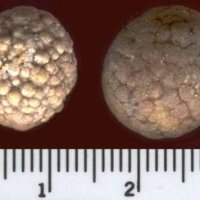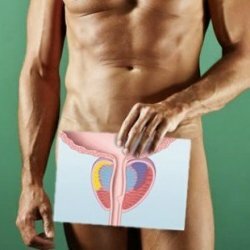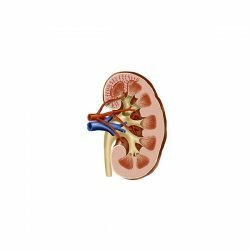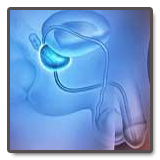Cholesterol stones in the gallbladder

Gallstone disease is considered a chronic disease of the bile duct system( these are the biliary tract and the gallbladder).In this disease, as a rule, one or several stones are present in the gallbladder. This disease is characterized by the following symptoms: nausea, hepatic colic( in the right upper quadrant there are bouts of pain), bloating, vomiting.
Primary cholesterol stones
The formation of primary cholesterol stones is the most studied process. After all, the formation of these stones in pure form, as well as with some impurities of calcium salts and bile pigments occurs in 75-80% of cases.
Cholesterol produced by hepatocytes in liquid body fluids and water is insoluble, so it penetrates into the content of bile "packed" in micelles( colloidal particles).Micelles consist of bile salts, and also partially lecithin, the molecules of the latter are oriented so that their hydrophilic groups are turned outward. This is necessary to ensure the stability of the colloidal gel( or solution), whereas the hydrophobic groups are inward( to hydrophobic cholesterol molecules that do not dissolve).
In the composition of a colloidal particle per molecule of cholesterol there are two molecules of lecithin, six molecules of bile salts. Lecithin molecules increase the volume of the micelle.
If, for some reason, for example, due to a failure in the synthesis of bile acids that occurs with estrogen surplus, the cause of pregnancy or the use of estrogen contraceptives, the formation of stable micelles is not provided by bile acids, the bile becomes lithogenic, and cholesterolTurns out to be in sediment. From what, in fact, there are and are increasing stones of the corresponding composition. If the content of bile acids is normal, then the lithogenicity of bile and the instability of micelles is determined by the release of cholesterol in the bile and excessive synthesis( which is most often observed with obesity): comparative insufficiency of bile salts develops.
The formation of pigmented stones has not been studied so widely.
The reasons for the formation of primary pigmented stones - the violation of pigmentation, which occur in different forms of hemolytic anemia. Often, pigmented stones appear again, especially if there is an infection in the biliary tract, which can also be associated with cholelithiasis. The main causative agent of inflammation is E. coli. Such pathogens synthesize the enzyme
P-glucuronidase, due to this enzyme the soluble conjugated bilirubin is converted into unconjugated bilirubin, which precipitates.
In hypercalcemia, which is associated with hyperparathyroidism, rarely primary primary calcareous calculi can be formed.
Secondary cholesterol stones
The formation of secondary pigment and cholesterol stones mainly occurs in the infected bile ducts, while the source of calcium salts is mainly inflammatory exudate and the secret of the mucous glands of the outlet part of the gallbladder.
If the specific gravity of a stone that is below 1 in the gallbladder, it is most likely in a floating( suspended) state and is not capable of exerting gravitational pressure on the walls of the bubble. If the diameter of the stone is less than 2-3 mm, then together with the bile they can, after passing through the bladder duct, penetrate first into the holedoch, and then into the duodenum. Large stones under pressure can hardly pass through the cystic duct, a narrow terminal section of the common bile duct, while traumatizing the mucous membrane, resulting in scarring and stenosis of these narrow sections of the bile duct system.
If the outflow of any secret, including bile is difficult, it always leads to the appearance and progression from the lumen of the gastrointestinal infection, which usually leads primarily to the development of cholecystitis. Violation of the outflow of bile promotes an increase in pressure in the biliary system, as well as the development of secondary pancreatitis.



